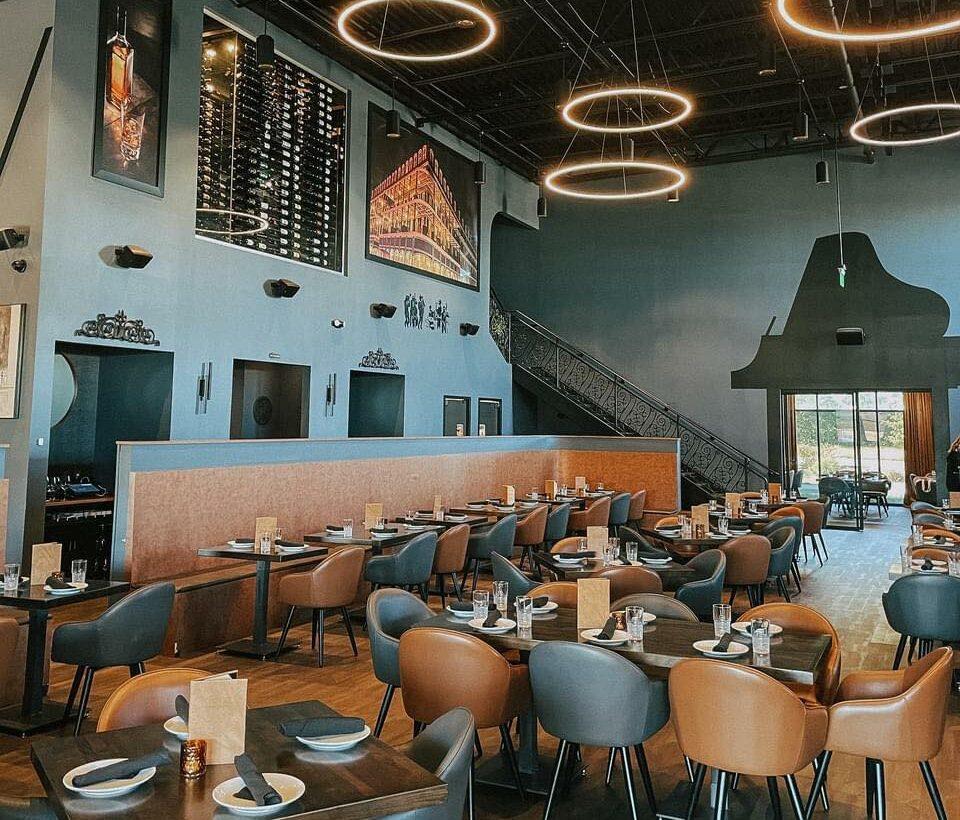Chinese Food Islamabad: Delight In Genuine Chinese Food at its Best
Chinese Food Islamabad: Delight In Genuine Chinese Food at its Best
Blog Article
Savor Authentic Eastern Food With a Pan-Asian Spin for a Culinary Experience
Getting started on a cooking trip via genuine Oriental food, improved with a Pan-Asian twist, offers a special chance to explore the abundant tapestry of flavors that define the region's diverse cooking practices. As you contemplate these attracting recipes, think about the cultural stories and historic impacts that form them, each bite using a tale waiting to be uncovered. asian restaurant isb.

Exploring Pan-Asian Flavors
In the realm of international gastronomy, Pan-Asian food stands apart for its impressive variety and the harmonious interplay of tastes from various Asian societies. This culinary technique commemorates the rich practices and special ingredients found throughout the continent, producing a tapestry of preferences that is both gratifying and appealing. Secret to Pan-Asian food is its capability to balance different tastes-- sweet, salted, spicy, and sour-- while highlighting the freshness and high quality of each active ingredient.
From the umami-rich soy sauce of Japan to the intense chili peppers of Thailand, Pan-Asian food provides a considerable scheme of flavors. These components are frequently combined in inventive methods, improving dishes with layers of complexity. For circumstances, making use of great smelling herbs such as lemongrass and cilantro, common in Vietnamese and Thai cuisine, adds a rejuvenating brightness to recipes, while the consolidation of coconut milk provides a luscious, rich appearance.
The focus on fresh fruit and vegetables and aromatic seasonings ensures that each dish is not only a feast for the palate yet additionally for the senses. Pan-Asian food invites restaurants to begin on a cooking journey, checking out the vast and differed landscapes of Oriental gastronomy with every bite.
Fusion Recipes to Attempt
While Pan-Asian food is commemorated for its conventional tastes, the modern culinary landscape is increasingly welcoming blend meals that mix these traditional elements with influences from various other areas. This cutting-edge technique not only honors the rich heritage of Eastern culinary arts yet likewise introduces unique taste experiences that appeal to modern tastes.
An archetype of such a fusion dish is the Korean-Mexican taco, where marinaded bulgogi beef is covered in a cozy tortilla, topped with kimchi and a hot gochujang-infused salsa. This combination marries the vibrant, mouthwatering flavors of Korea with the vivid, fresh components of Mexican cuisine. Likewise, sushi burritos have obtained appeal, joining together the delicate virtuosity of Japanese sushi with the passionate, hand-held comfort of a burrito, commonly featuring combination active ingredients like tempura shrimp and avocado with a drizzle of wasabi mayo.
An additional significant meal is Thai curry ramen, which instills the luscious, aromatic seasonings of Thai curry into the comforting broth of standard Japanese ramen, developing an unified mix that entices the senses. These combination recipes prolong beyond mere uniqueness; they represent a cooking dialogue between societies, motivating exploration and development in the globe of Pan-Asian cuisine.
Essential Components and Seasonings
To genuinely appreciate Pan-Asian cuisine, one need to comprehend the important components and flavors that develop its structure. This varied cooking design attracts from a rich tapestry of Oriental traditions, using an unified mix of tastes and structures. Secret ingredients include soy sauce, fish sauce, and oyster sauce, which give a savory umami depth vital to Eastern meals. Corresponding to these are rice vinegar and mirin, offering a delicate level of acidity and sweet taste.
Aromatic elements are crucial, with garlic, lemongrass, and ginger being common across various Pan-Asian dishes. These components provide an aromatic base that enhances the complexity of tastes. Flavors such as celebrity anise, cardamom, and cinnamon present warmth and character, resembling impacts from regions like China and India.

Food Preparation Techniques and Tips
Understanding the art of Pan-Asian food calls for familiarity with its distinctive cooking techniques, each adding to the vibrant tapestry of tastes this culinary tradition is celebrated for. Central to these techniques is the stir-fry, a rapid food preparation strategy that protects the nutritional integrity and vivid shades of active ingredients. Making use of a wok, the stir-fry technique permits for also heat distribution, essential for achieving the characteristic texture and flavor equilibrium of Pan-Asian meals.
An additional basic strategy this is steaming, specifically widespread in Chinese cuisine. This mild technique preserves the all-natural flavors and nutrients of components, making it ideal for seafood and vegetables. Dumplings, a cherished staple, typically take advantage of steaming, leading to soft, delicious appearances.
Grilling, likewise indispensable, passes on great smoky midsts to recipes such as Korean bulgogi or Japanese yakitori (Best ambiance restaurants Islamabad). This method commonly includes marinating active ingredients, permitting tastes to permeate deeply before cooking over an open fire or hot plate
Finally, understanding the art of stabilizing tastes-- wonderful, sour, salty, bitter, and umami-- is critical. Properly layering these elements can boost a recipe from ordinary to amazing, supplying a complicated and satisfying cooking experience that embodies the significance of Pan-Asian food.
Eating Experiences Worldwide
Around the world, Pan-Asian cuisine offers an unrivaled eating experience, celebrated for its rich tapestry of tastes and vivid presentations. This culinary sensation has actually gone beyond cultural limits, catching the hearts and tastes buds of food lovers worldwide. In multicultural cities fresh York, London, and Sydney, Pan-Asian restaurants work as melting pots where culinary traditions from Thailand, Japan, China, and beyond assemble, providing diners with an eclectic mix of recipes that highlight the region's diversity.
The global appeal get redirected here of Pan-Asian cuisine depends on its capability to provide both credibility and advancement. Chefs masterfully wed standard ingredients such as lemongrass, soy sauce, and miso with modern techniques, resulting in meals that are both familiar and refreshingly brand-new. This blend permits diners to start a culinary trip that appreciates heritage while welcoming modernity.
In addition, eating experiences are boosted with attentively developed settings that show the ethos of Pan-Asian aesthetic appeals. From minimalist Japanese-inspired interiors to dynamic Thai-themed spaces, each restaurant uses a distinct ambiance that enhances the cooking offerings. As an outcome, clients are not just consuming a dish but partaking in a cultural experience, making Pan-Asian dining an absolutely worldwide sensation.
Final Thought
The exploration of Pan-Asian cuisine provides an extensive understanding of the complex interplay of tastes and culinary customs throughout Asia. By accepting blend meals such as Thai curry ramen and sushi burritos, the cooking journey not just highlights the flexibility of standard ingredients however likewise showcases ingenious contemporary strategies. This gastronomic adventure, enriched weblink by cooking methods and crucial flavors, supplies a distinct chance to appreciate the social diversity and culinary creativity that define Pan-Asian food on a global range.
Beginning on a cooking journey via genuine Asian cuisine, improved with a Pan-Asian twist, offers a distinct possibility to check out the rich tapestry of flavors that specify the region's diverse culinary practices.In the realm of global gastronomy, Pan-Asian food stands out for its exceptional variety and the unified interplay of flavors from numerous Eastern cultures. Key to Pan-Asian cuisine is its ability to stabilize different tastes-- wonderful, salty, spicy, and sour-- while highlighting the freshness and high quality of each ingredient.

Report this page